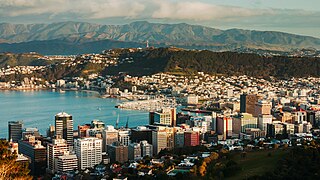
Wellington is the capital city of New Zealand. It is located at the south-western tip of the North Island, between Cook Strait and the Remutaka Range. Wellington is the third-largest city in New Zealand, and is the administrative centre of the Wellington Region. It is the world's southernmost capital of a sovereign state. Wellington features a temperate maritime climate, and is the world's windiest city by average wind speed.

Eastbourne is a suburb of Lower Hutt, a part of Wellington, New Zealand. Lying beside the sea, it is a popular local tourist destination via car from Petone or from ferry crossings from central Wellington. An outer suburb, it lies on the eastern shore of Wellington Harbour, five kilometres south of the main Lower Hutt urban area and directly across the harbour from the Miramar Peninsula in Wellington city. A narrow exposed coastal road connects it with the rest of Lower Hutt via the Eastern Bays and the industrial suburb of Seaview. It is named for Eastbourne in England, another seaside town known as a destination for day-trips.
Waipukurau is the largest town in the Central Hawke's Bay District on the east coast of the North Island of New Zealand. It is located on the banks of the Tukituki River, 7 kilometres south of Waipawa and 50 kilometres southwest of Hastings.

The University of Otago, Wellington is one of seven component schools that make up the University of Otago Division of Health Sciences. All University of Otago medical students who gain entry after a competitive Health Sciences First Year programme, or who gain graduate entry, spend their second and third years studying in Dunedin in a programme called Early Learning in Medicine (ELM), which is jointly taught by the Otago Medical School and the School of Biomedical Sciences. In their fourth, fifth, and sixth years, medical students study at one of three clinical schools: either Otago Medical School or the University of Otago, Christchurch or the University of Otago, Wellington.

The D.I.C. was a New Zealand department store chain, founded in Dunedin by Bendix Hallenstein in 1884.

Dunedin Hospital is the main public hospital in Dunedin, New Zealand. It serves as the major base hospital for the Otago and Southland regions with a potential catchment radius of roughly 300 kilometres, and a population of around 300,000.
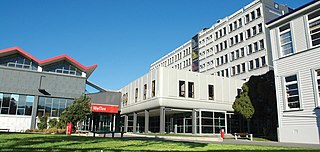
The Wellington Institute of Technology, also known as WelTec, is a New Zealand polytechnic based in Petone, Lower Hutt. WelTec was formed in 2001 by an amalgamation between the Central Institute of Technology and the Hutt Valley Polytechnic In 2020, WelTec, along with 15 other national polytechnics, became subsidiaries of Te Pūkenga – New Zealand Institute of Skills and Technology.

Christchurch Hospital is the largest tertiary hospital in the South Island of New Zealand. The public hospital is in the centre of Christchurch city, on the edge of Hagley Park, and serves the wider Canterbury region. The Canterbury District Health Board (CDHB) operates the hospital with funding from the government.
Daisy Elizabeth Platts-Mills was a New Zealand medical doctor and community leader. She was the first woman medical doctor in private practice and served on numerous community organisations, particularly those concerned with the health and welfare of women and children.
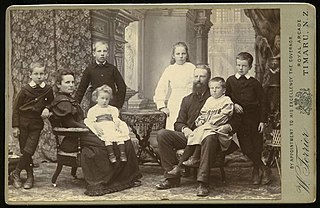
Edith Penelope Tennent was a New Zealand nurse and hospital matron.
The Karitane Hospitals were six hospitals in New Zealand run by the Plunket Society, located in Auckland, Christchurch, Dunedin, Invercargill, Wanganui and Wellington. They were established as training hospitals for Karitane nurses and cared for babies with malnutrition and other dietetic complaints, and premature babies. They also offered mother care training and assistance. The first hospital opened in 1907 and the hospitals were closed between 1978 and 1980 due to financial difficulties and changes in society and maternity services.

The Capital and Coast District Health Board (CCDHB) was a district health board with the focus on providing healthcare to Wellington City, Porirua City and the Kāpiti Coast in New Zealand. The CCDHB employed about 6000 people across the Wellington Region. It was disestablished on 1 July 2022, with its functions and responsibilities being taken over by the national health service Te Whatu Ora.

The Hutt Valley District Health Board was a district health board that provided healthcare to the cities of Lower Hutt and Upper Hutt in New Zealand. In July 2022, the Hutt Valley DHB was merged into the national health service Te Whatu Ora.

The Northland District Health Board is a district health board with the focus on providing healthcare to the Northland Region of New Zealand. In July 2022, the Northland DHB was merged into the national health service Te Whatu Ora.

The Southern District Health Board was a district health board which provided healthcare to an area covering the southern half of the South Island of New Zealand. In July 2022, the Southern DHB was dissolved as part of a nationwide overhaul of the district health board system. Its former functions and responsibilities were taken over by Te Whatu Ora.

The St Helens Hospitals were maternity hospitals located in seven New Zealand cities. They were the first state-run maternity hospitals in the world offering both midwifery services and midwifery training. The first hospital opened in 1905 in Wellington and the last one in Wanganui in 1921. The services of the St Helens Hospitals were gradually incorporated into other hospitals and the last hospital to close was in Auckland in 1990.

Queen Mary Hospital, in Hanmer Springs, New Zealand is a former residential alcohol and drug treatment hospital. It opened in 1916 to treat returned servicemen from World War I, on the site of a sanatorium built in 1879. From the 1920s to 1960s it treated mental health conditions generally but in the 1970s it became the national specialist addiction and alcohol treatment centre. The hospital closed in November 2003. The Queen Mary Hospital (Former) and Hanmer Springs Thermal Reserve Historic Area was designated as a historic site by Heritage New Zealand in 2004. Within that area three buildings, the Soldiers' Block, Nurses' Home and Chisholm Block, were given Category I protection by Heritage New Zealand in 2005.
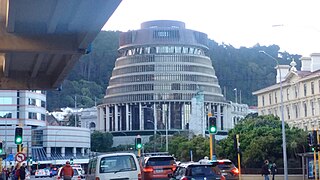
Whitmore Street is at the boundary of the central business district and the government buildings area of Wellington, New Zealand's capital. The street runs almost north-south and is one of those linking Lambton Quay, Wellington's main shopping street, with Stout Street, Featherston Street and the harbourside at Customhouse/ Waterloo Quay. It is in the suburb of Pipitea.
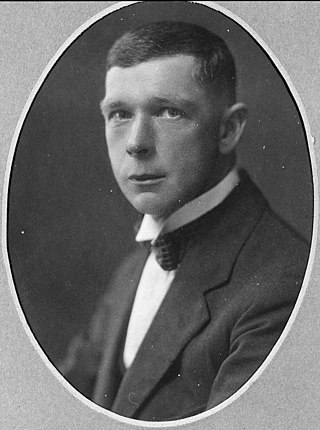
Francis Dewsbury Pinfold was a New Zealand doctor and local politician. He served as mayor of Hamilton from 1931 to 1933.

Sir Markus Dunajtschik is a New Zealand businessman, property developer, and philanthropist. With his partner, Dorothy Spotswood, he donated $53 million towards the cost of Wellington's new children's hospital, Te Wao Nui, which was opened in September 2022.

























